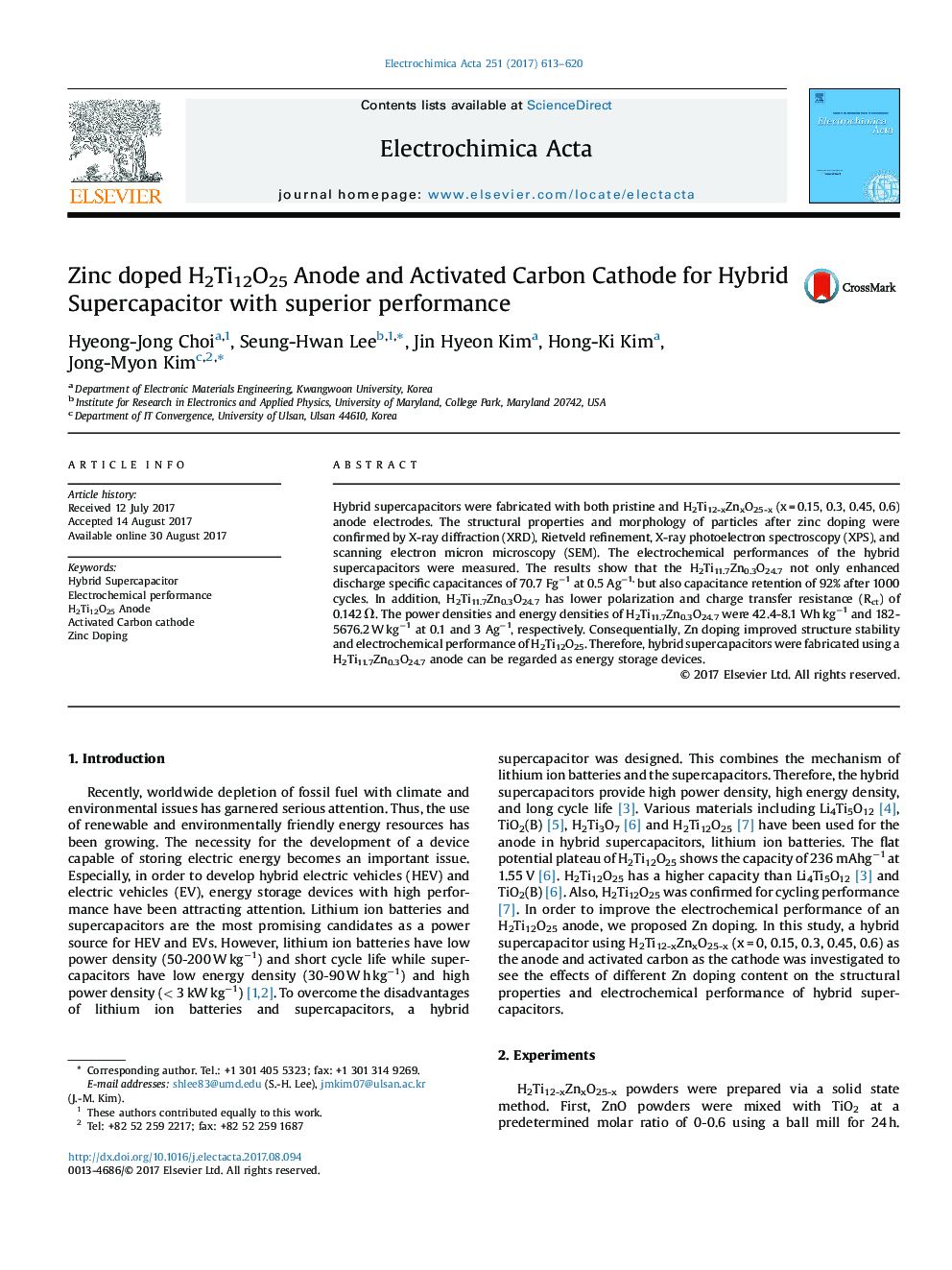| Article ID | Journal | Published Year | Pages | File Type |
|---|---|---|---|---|
| 6469992 | Electrochimica Acta | 2017 | 8 Pages |
â¢Hybrid supercapacitors were fabricated with H2Ti12-xZnxO25-x (x = 0â¼0.6) anode.â¢Capacitance retention of H2Ti11.7Zn0.3O24.7 was 92% after 1000 cycles.â¢Power densities of H2Ti11.7Zn0.3O24.7 were 42.4-8.1 Wh kg-1 from 0.1 to 3 Ag-1.â¢Energy densities of H2Ti11.7Zn0.3O24.7 were 182-5676.2 W kg-1 from 0.1 to 3 Ag-1.
Hybrid supercapacitors were fabricated with both pristine and H2Ti12-xZnxO25-x (x = 0.15, 0.3, 0.45, 0.6) anode electrodes. The structural properties and morphology of particles after zinc doping were confirmed by X-ray diffraction (XRD), Rietveld refinement, X-ray photoelectron spectroscopy (XPS), and scanning electron micron microscopy (SEM). The electrochemical performances of the hybrid supercapacitors were measured. The results show that the H2Ti11.7Zn0.3O24.7 not only enhanced discharge specific capacitances of 70.7 Fgâ1 at 0.5 Agâ1, but also capacitance retention of 92% after 1000 cycles. In addition, H2Ti11.7Zn0.3O24.7 has lower polarization and charge transfer resistance (Rct) of 0.142 Ω. The power densities and energy densities of H2Ti11.7Zn0.3O24.7 were 42.4-8.1 Wh kgâ1 and 182-5676.2 W kgâ1 at 0.1 and 3 Agâ1, respectively. Consequentially, Zn doping improved structure stability and electrochemical performance of H2Ti12O25. Therefore, hybrid supercapacitors were fabricated using a H2Ti11.7Zn0.3O24.7 anode can be regarded as energy storage devices.
